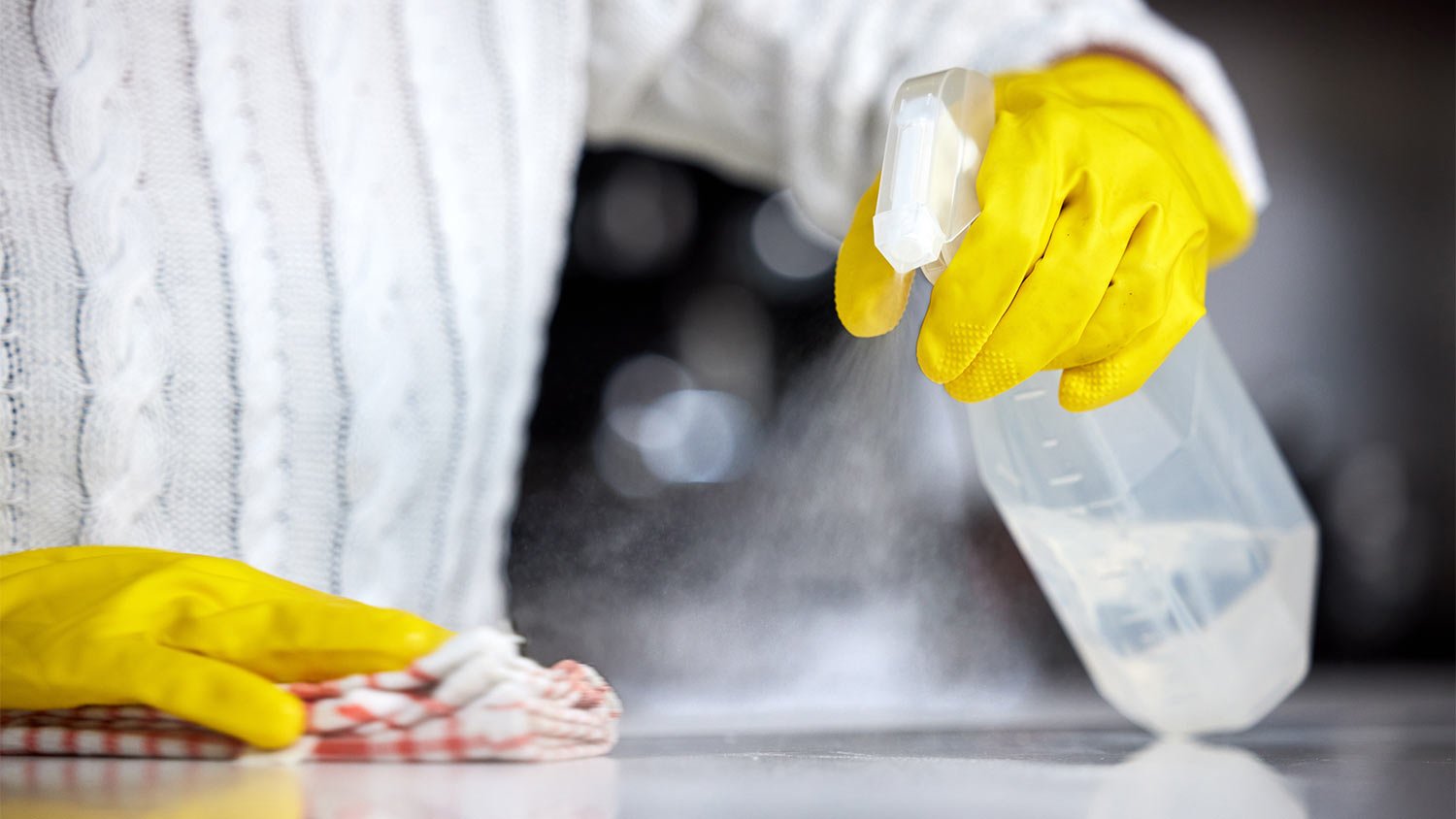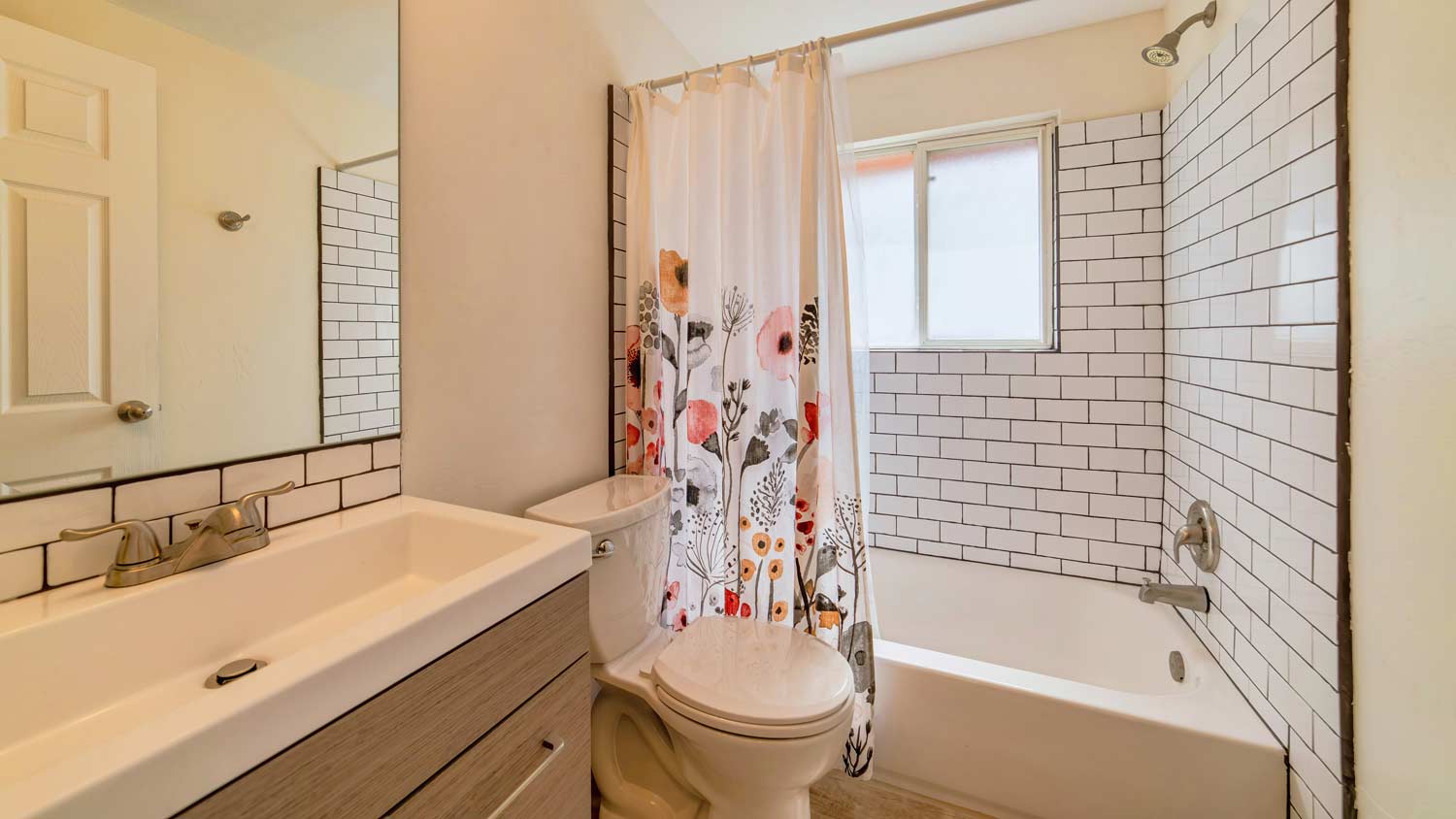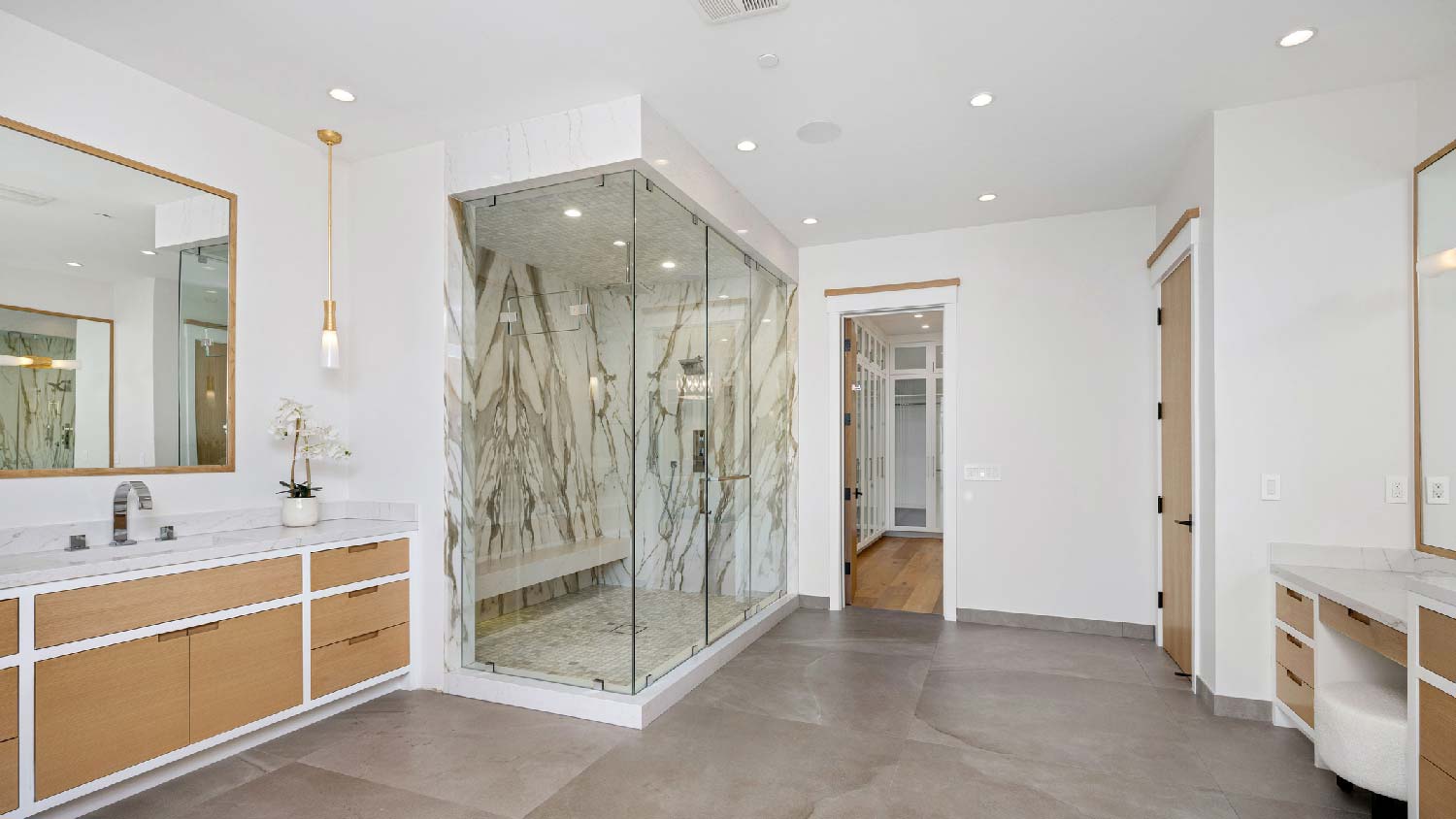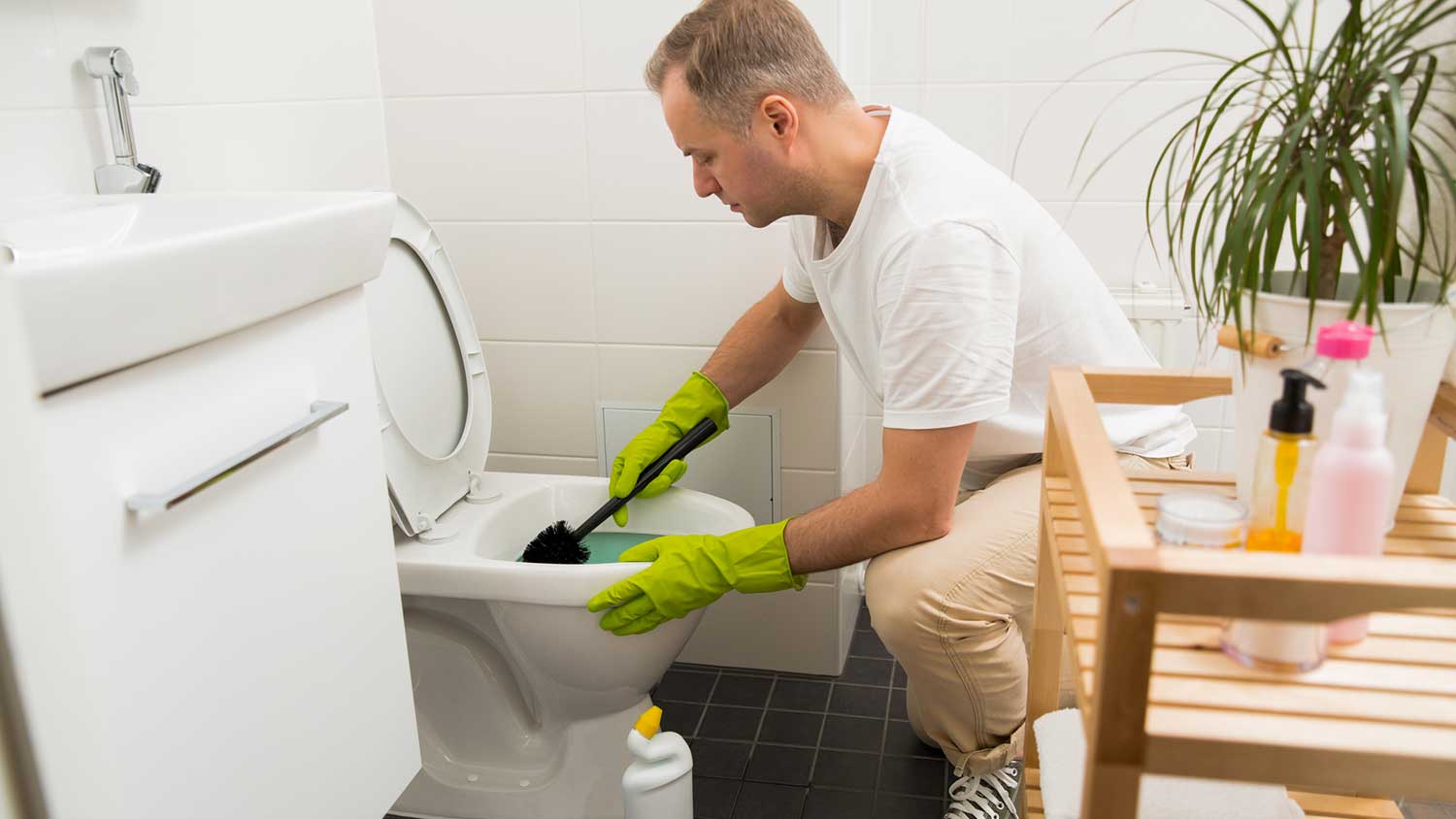5 “Natural” Mold Killers: How They Work and What They Can Actually Clean
Find out the best ways to nip mold in the spore


Simple cleaners can remove surface mold, but cannot treat black mold or more serious infestations.
“All natural” is defined as cleaners that are “not artificial.”
Call in professional mold remediation services if mold covers a large area or you suspect black mold.
If you spot mold growth in your home, you may wonder if there are “natural” alternatives to cleaning and removing it. The answer is: it depends. The surface, level of infestation, and type of mold all factor into whether the cleaner is strong enough to remove it. Before you spend your weekend scrubbing your bathroom tile, find out which cleaning agents will be most effective.
What Is Mold and Why Is It a Problem?
Mold is a fungus that grows from spores that are naturally present in both indoor and outdoor air. Once they find a damp or wet surface, they land on it and begin to grow, colonizing into a visible substance in a matter of weeks. The spores digest whatever they’re growing on, so it’s important to get rid of the mold before it causes lasting damage.
Aside from its damaging properties and grotesque appearance, mold can also make you sick and aggravate allergy symptoms. According to the Environmental Protection Agency (EPA), indoor mold growth can pose these health risks:
Dizziness
Headaches
Asthma attacks
Skin rashes
Runny nose
Red eyes
Keep in mind that because mold is a fungus (not a virus or bacteria), even solutions meant to “sanitize” or “disinfect” may not be right for removing mold.
What Can Kill Mold?

Killing mold involves more than just scrubbing the spores away. To truly eradicate it, you need a substance that can kill mold spores. The Centers for Disease Control and Prevention only recommends bleach or dish detergent as effective cleaning solutions following a mold outbreak. But if you only have “natural” cleaners at hand, you can still attempt to use them. Test on a small area first and monitor closely the following days. If it reappears, you’ll likely need to purchase a stronger cleaning agent (or call a professional).
When going the DIY route for mold removal, be sure to take the proper safety precautions. The CDC recommends wearing rubber boots, rubber gloves, and safety goggles, as well as keeping the affected areas well-ventilated during cleanup. If mold contamination exceeds 10 square feet, always call in a professional rather than attempting to remove it yourself.
Even if you’re dealing with a small area of mold and you want to DIY, it may be worth calling in a pro to check your work and make sure the mold—and its moisture source—are really gone.
Vinegar
Vinegar’s acidity can inhibit the growth of a wide assortment of fungi and other microorganisms. With this, and all other methods, be sure to perform a patch test first to test its effectiveness and make sure the vinegar doesn’t damage the item you’re trying to salvage.
Here’s how to use vinegar to kill mold:
Fill a spray bottle with undiluted white vinegar.
Spray the moldy surface until it’s fully saturated.
Let it sit for one hour.
Wipe the area clean with a damp cloth and allow it to dry.
Tea Tree Oil and Mold
Tea tree oil is an extremely effective mold killer. In fact, a 2015 study found it was even more effective than vinegar at killing mold, according to the National Library of Medicine. Here’s what to do:
Combine 1 teaspoon of tea tree oil and 1 cup of water in a spray bottle.
Shake the mixture vigorously to blend.
Spray the moldy area until it’s fully saturated.
Let it sit for one hour, keeping children and pets away from the area.
Wipe the surface down with a clean, damp cloth and allow it to dry.
Hydrogen Peroxide
The antimicrobial properties of hydrogen peroxide help it combat mold. Here’s how to use it:
Fill a spray bottle with 3% hydrogen peroxide.
Spray the mold until it’s fully saturated.
Let it sit for 10 minutes.
Scrub the area with a stiff-bristled brush until all the mold spots are removed.
Rinse the area with a clean, damp cloth.
Wipe dry.
Baking Soda
Baking soda also has antimicrobial properties that can kill off mold and mildew spores. Here’s what to do:
Mix small amounts of water with baking soda until it forms a paste.
Don rubber gloves and use your hands to apply the paste to the entire moldy surface.
Let it sit for at least 10 minutes.
Scrub it off with soap and water.
Citrus Seed Extracts and Fruits
Lemon juice in high concentrate can be used to break down mold, but may not be effective if the mold spores have moved past the surface. If you only have a surface-level issue, follow these steps:
Juice one lemon and mix with equal part salt to make a paste.
Use a toothbrush to rub onto the affected area.
Allow to sit for 10 minutes.
Wipe off with a warm dish rag and allow to fully dry.
Do Natural Substances Kill Mold On All Surfaces?
Unfortunately, not everything is salvageable after mold removal. Natural solutions like vinegar kill mold, but it’s not possible to penetrate porous materials deeply enough to fully eliminate the spores. Porous or absorbent surfaces such as carpeting, upholstery, mattresses, insulation, and stuffed animals will need to be tossed, as well as books, documents, and other paper products.
Along with that, these solutions may also damage certain surfaces due to their natural acidity. Here are the surfaces to avoid and what to do instead:
Stone countertops: Spray the surface with a 1:2 mixture of hydrogen peroxide and water, let it sit for five to 10 minutes, then scrub the mold away with a soft-bristled brush.
Hardwood flooring: Spray the floor down with a solution of water and dish soap, then use a soft-bristled brush to scrub away the mold (follow up with a towel or sponge to soak up any excess moisture).
Metals such as stainless steel, aluminum, and copper: Wash in a solution of water and dish soap, using a soft-bristled brush to scrub away the mold; rinse clean.
DIY Mold Removal vs. Hiring a Pro
A small outbreak of mold under 10 square feet that’s localized to one area of your home is DIY-able, but anything more widespread should get the help of a professional. Look for the signs you need mold remediation, like if you smell a persistent musty or mildewy odor, but you can’t locate the source of the mold. A local mold remediation service can help eradicate your mold issue and pinpoint the source of the moisture that caused it. The average cost of mold remediation is around $2,200, depending on the size and severity of the issue.
If you have a surface-level mold issue, you may also want to consider hiring a professional cleaner to conduct a deep clean. This is especially helpful for areas that see a lot of dampness, like a bathroom or kitchen. Scheduling regular weekly or biweekly cleaning can keep mold and mildew at bay.
Tips to Prevent Mold Around the House
The presence of mold is a telltale sign of a moisture problem, so the first step in preventing mold is to address whatever moisture problem caused it in the first place. You may need to add or replace insulation, call a local plumber to fix a leak, or address structural concerns that are allowing water to get into your home.
Aside from that, here are the best ways to prevent mold:
Learn how to check for mold on a weekly basis, especially near problem areas such as your shower and window sills.
Invest in the cost of a whole-house dehumidifier to control the moisture content in the air.
Use ventilation fans in your kitchen and bathroom
Repair windows and/or damaged seals to stop leaks.
Consider adding mold inhibitors to your paint before painting your home’s interior.





- How to Get Rid of Mold From Every Surface in Your Home
- How to Get Rid of Mold in Your Basement
- How to Get Rid of Mold in Bathroom: 5 DIY Methods
- How to Test for Mold in Your Home
- Does Vinegar Kill Mold and Mildew?
- 12 Signs of Mold in Your House and What to Do About It
- How to Remove Mold From Fabric Furniture
- The Complete Guide to Mold Removal Best Practices
- 7 Possible Symptoms of Mold in Your Air Ducts
- How to Get Rid of Mold Smell in Your House















